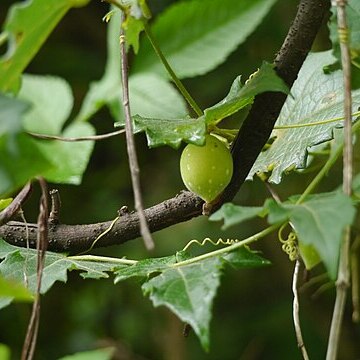Roots fusiform, 1.5-2 cm in diam. Stem and branches glabrous. Petiole slender, 4-10 mm, puberulent at first, glabrescent; leaf blade very variable, ovate, oblong, ovate-triangular, or hastate, undivided or 3-5-lobed, leathery; lobes oblong-lanceolate, lanceolate, or triangular, 8-12 × 1-5 cm, abaxially densely setose or almost glabrous, adaxially densely setose or scabrous, base cordate, margin entire or dentate, apex obtuse or acuminate. Tendrils slender. Male flowers umbellate or subumbellate; peduncle very short, apically 10-20-flowered; pedicels 2-8 mm; calyx tube 3-5 mm, ca. 3 mm in diam.; segments subulate, 0.2-0.4 mm; corolla yellow or yellow-white; segments triangular, 1-1.5 mm, apex obtuse or acute; filaments filiform, ca. 3 mm; anther cells curved or conduplicate, puberulent. Female flowers usually solitary; pedicel 2-10 mm, puberulent; calyx and corolla as in male flowers; ovary ovoid, 2.5-3.5 × 2-3 mm; stigmas 3. Fruit red-brown, broadly ovoid, oblong, or subglobose, 2-6 × 2-5 cm. Seeds gray-white or gray-brown, suborbicular or obovate, 5-7 × 5-6.5 mm, smooth or slightly tuberculate. Fl. May-Aug, fr. Jun-Nov.
More
A pumpkin family plant. It is a climber which keeps growing from year to year. The leaves have stalks. The leaves are 3.5-17 cm long by 2-14 cm cm wide. They have 3-5 lobes and sometimes deep teeth along the edge. The tendrils can be simple or branched. The flowers are yellow. The fruit are bright red. They are oval.

